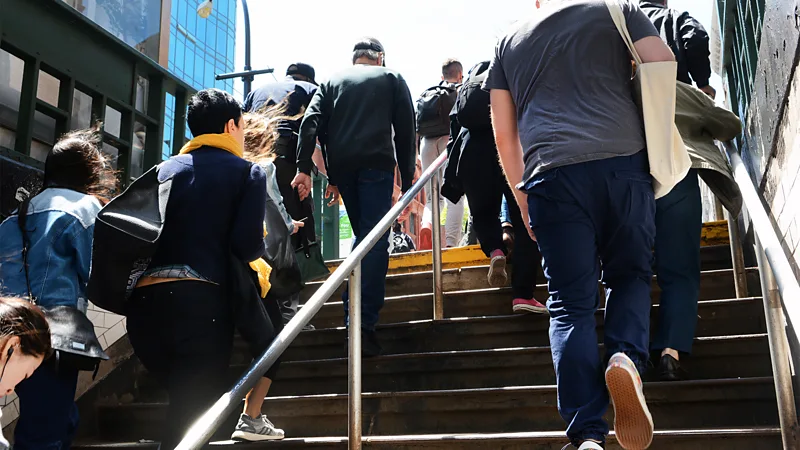The city where visitors are encouraged to ‘eat till they’re bankrupt’
CNN
Osaka -Japan - Let’s be honest. Osaka hasn’t got Tokyo’s mind-bending urban sprawl, where every turn opens up a world of adventure. Likewise, it lacks the historic temples, tree-covered hills and ancient history of Kyoto.
What it does have, though, are two of the biggest draws any visitor to Japan could ask for. The best food anywhere in the country. And the people, who are funky, fun and playful.
This is a place to come and eat, enjoy the odd local brew and take in a city where day-to-day pleasures come to the fore unlike anywhere else.
Food is practically a religion in Osaka, which is now anticipating the global spotlight as it gears up to host Expo 2025. It is known as the kitchen of Japan, and, for foodies, any tour of its myriad culinary delights must start in Dotonbori.
The streets along either side of the Dotonbori Canal, between the Dōtonboribashi Bridge and Nipponbashi Bridge, in the city’s Namba district, are the place to spend a gut-busting afternoon. You’ll know you’re in the right place when you see restaurants adorned with huge, moving mechanical crabs and octopus models looming above, demanding you come inside and eat.
Octopus is, unquestionably, the main ingredient here, the essential part of Osaka’s great gift to Japan: takoyaki. Dough balls filled with diced octopus, fried until blisteringly hot, they can be picked up for on-the-go snacking wherever you turn.
However, as Tokyo-based CNN producer Junko Ogura says, these are not for eating in one go.
“It’s really hot,” she says. “Just be careful. Not the whole thing!”
Of course, few tourists can resist this approach, even if it does leave them with a scorched mouth.
Takoyaki is, however, just the start. As Junko explains, Osakans even have a saying for their food-based obsessions.
“Kuidaore.”
It basically means: “Eat in Osaka like you’re going to go bankrupt.”
That goes for easing succulent crab meat from its shell with chopsticks and dining on ultra-fresh sushi, with chefs working their magic and handing you the result to wolf down immediately.
On Sennichimae Doguyasuji – aka “kitchen shopping street” – you can pick up the finest Japanese knives and cooking equipment, so you can continue to craft your own dishes back home.
You look healthy, I love you’
There is, though, one dish that you’ll need to set aside a chunk of change for. Something so succulent and delicious that it has become renowned the world over. Kobe beef. Readily available in Dotonbori and across Osaka, this delicacy’s reputation precedes it.
This is meat reared to the most exacting standards, with prices to match. A kilo of Kobe grade 11 sirloin can go for $300 or more.
Boarding a Shinkansen bullet train from the heart of Osaka, you can be in Kobe in just half an hour. The cows are raised just outside the city under strict conditions. Those who’ve been in Japan for less than seven days cannot come into contact with them. In fact, to speak with a farmer involved in their care requires CNN’s Junko to call them via Zoom.
When asked how the cattle are treated compared with other cows, the farmer is effusive in his explanation.
“He [touches] them as much as possible, talks to them and says, ‘you look cute, you look healthy, I love you,’” says Junko, translating the farmer’s words.
If that seems out there, you can add in the well-worn fact that farmers massage and pet their cows. The farmer himself says that after three years of care, he is sad to see his charges head off to be slaughtered, but is happy in the knowledge that they provide happiness to those who eat them.
Succulent, and with a melt-in-the-mouth texture, Kobe beef is arguably the best on Earth, a cornerstone of any foodie outing in Osaka.
Let’s all go to the ball game
After all that food, a spot of exercise tends to be the order of the day. Like so many parts of Japan, Osaka is obsessed with baseball. The game has been a fixture in this part of the world since it was first introduced in 1872.
Today, baseball is played by all ages, from kids in little league right through to octogenarians enjoying a pick-up game on a summer afternoon.
It’s as much about watching as it is playing, however. The local team is the Hanshin Tigers, one of the most storied baseball franchises in Japan. The club began life in 1936 and briefly played as the Osaka Tigers, before reverting to Hanshin, the city 20 minutes west, where it plays at Koshien Stadium.
Long seen as an underdog, the Tigers won the Japan Series in 2023, breaking a 38-year hoodoo called “The Curse of the Colonel,” believed to have been caused by overly excited fans throwing a statue of KFC legend Colonel Sanders into the Dotonbori Canal when they last won the title 1985.
Hardcore fans attend every game, including Takada, a local man who spells out his priorities while sitting in the bleachers waiting for a rain-delayed game to get going.
“Hanshin Tigers number one,” he says with a smile. “Hanshin Tigers. Then family. Then work or career.”
Takada says he wept when the Tigers won the pennant in 2023, hugging friends and crying so much that tears came out of his nose. Even today’s game being called off can’t dampen his spirits.
A long soak
If a love of nonstop action seems to be behind Osakans’ fun and playful attitude, respite is at hand in the city’s many marvelous onsens. These natural springs are part of a classic culture and require an etiquette all of their own. Tattoos must be covered, owing to body art being viewed historically in Japan as something that only adorned yakuza gangsters. Participants must be naked and are separated into men’s and women’s baths, ready for a wash and long soak at the end of a busy day at work.
In the onsen, it’s all about “naked friendship,” a place where everybody is equal, much like the sauna cultures of Finland and Estonia. The beautiful countryside surrounding Osaka is full of them, but city center baths are easy to find too, making them an ideal spot to take time out and even meet a few local people – albeit without any clothes on.
Osaka is, after all, a city of flavors and friendship. A place where you can eat royally and spend time doing so with people who are obsessed with the best food and making sure everyone receives the finest hospitality. It’s on show in restaurants, ballparks and onsens, too. Somewhere you need to go all out and make peace with the fact you might go “Kuidaore.”
Tokyo and Kyoto may be the cities known for having it all in Japan. But it’s important to always make time for Osaka.


























































